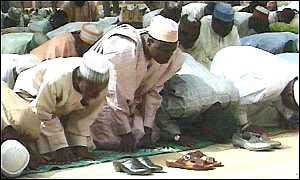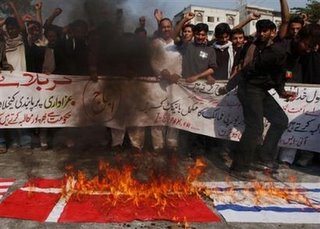Someone posted this on a forum I frequent, and all I can say is damn I hope its true.
Posted: Mon Feb 20, 2006 10:48 pm Post subject: Hero Classes
--------------------------------------------------------------------------------
THIS THREAD WAS DELETED AS SOON AS IT WAS POSTED LUCKILY I SAVED IT AS SOON AS I SAW IT, TRUE OR UNTRUE WE SHALL SEE, STILL A GOOD READ
Sources inside Blizz have revealed their plans for hero classes. Blizzard does plan to release hero classes with the expansion, but they haven’t explicitly stated it because they want to announce it close to the release date, insuring a huge amount of hype. I haven’t been told much more than the basics, but I’ll try to explain the system as best as I can:
At any given level there is a certain amount of content; at level 60, the amount of content is very disproportionate with the available content for other levels. The reason is obvious: it is the current endgame, and players need something to enjoy. However, with the level cap raised players would be able to blow through and skip a lot of the content that has been developed over the past year, and allowing players to do so would be a poor use of the developers’ time. This is where hero classes come in.
You will be stuck at level 60, just like you are now, even when the expansion comes out. An epic quest (of REALLY epic proportions) for each hero class will be made available to level 60 players. The only way to break the level 60 barrier will be to go on one of these quests to become a hero class. The quest will require the player to do a lot of solo content as well as a variety of group and raid content. Upon completion of the quest, the player will become a level 61 hero class. They can then once again begin their normal level progression. A hero class is not innately more powerful than a normal class (but the level differentiation makes them more powerful of course). Hero classes will be available to everyone and although the hardcore players will naturally get their hero classes first, it is designed so that players of all play styles will be able to become a hero class in a reasonable amount of time. Blizzard’s implementation of hero classes will accomplish a lot of things. It will create a natural barrier at level 60 that will insure that the average player will experience more of the content Blizz has developed, it gives players a way of further differentiating themselves, and it adds a huge amount of new dynamics between different classes.
Each race/class combination will have 2 hero classes available to them (with several overlapping). This presents a monumental balance job (there are about 50 hero classes), which is probably another reason why Blizzard is delaying the information release. Choosing your hero class will be irreversible, much like the tradeskill masteries. Some hero classes are an extension of the “father” class, some have tweaked mechanics, while others are radically different. The easiest example I can think of is a Night Elf priest, for which the 2 hero classes are a Priest(ess) of the Moon (a continuation of the priest’s current form) and Demon Hunter (an agility-based combat hero with a variety of discipline-esque abilities). So without further ado, here is a brief overview of some of the hero classes:
DRUIDS
Night Elf Druid:
Arch Druid: This will be a hybrid class in the same vein as its “father” class, and Storm Crow form may make a reappearance.
Keeper of the Grove: The druid will sacrifice some of his shapeshifting abilities in exchange for improved healing and casting, and will even be able to command treants on occasion.
Tauren Druid:
Arch Druid: see above
Elder: This is essentially a druid that has lost some shapeshifting abilities and gained some beast-like abilities similar to the hunter. The casting and healing abilities are also amped up, but not nearly as much as the Keeper of the Grove. The Elder also has a bit of the Diablo II druid mixed in for good measure.
HUNTERS
Night Elf Hunter:
Ranger: The Ranger is sort of a hunter/rogue mix. The Ranger will use the energy bar, will have a few stealthy abilities (but not of the same caliber as the rogue), and will no longer have a pet.
Beastmaster: The Beastmaster focuses more on the beast aspect than the ranged aspect of the hunter. He gains new beast abilities, such as switching pets in battle, and is a bit meaner in melee combat in exchange for a lot of his ranged hitting power.
Dwarf Hunter:
Mountaineer: The Mountaineer is similar to the ranger (no pet, energy bar), but without the stealth aspects. The Mountaineer is hardier in melee combat than the hunter and and also has more extensive tracking and detection abilities.
Beastmaster: see above
Orc Hunter:
Outrider: The Outrider is very similar to the wolfrider from Warcraft III, focusing on swift maneuvers and incapacitating enemies. He uses the energy bar.
Beastmaster: see above
Tauren Hunter:
Tracker: The Tracker uses the energy bar like the Mountaineer, but still retains the hunter pet, and as a result is not as tough as the Mountaineer.
Beastmaster: see above
Troll Hunter:
Shadowhunter: This is essentially a hunter that drops some of it’s beast and survival abilities for some shadow spells (think Hex). The Shadowhunter still uses mana.
Headhunter: The Headhunter still has the ranged emphasis of the hunter, but it focuses on throwing weapons (a massive revamp for throwing weapons is planned). The Headhunter uses energy, has more combat abilities, and drops the pet.
MAGES
Human Mage:
Archmage: The Archmage is an exact extension of the mage class, with arcane, fire, and frost spells. Apparently one of the abilities being toyed around with is Summon Water Elemental. The planned incarnation of the spell will be a long-cooldown summon that will not function like a normal pet, and will instead function more along the lines of the Mechanical Yeti (no player control).
Necromancer: The only similarity between the Necromancer and the mage is the emphasis on magical damage. The necromancer uses shadow damage and has a major focus on pets, similar to the warlock. However, unlike other pet classes, the majority of the Necromancer’s damage will come from the pet instead of the Necromancer. I do not know if the Necromancer will be able to have multiple pets out at once.
Gnome Mage:
Archmage: see above
Arcanist: The Arcanist is similar to the mage, with a focus on arcane magic. The Arcanist does slightly less damage than the Archmage, but gains added utility and new support spells.
Undead Mage:
Archmage: see above
Necromancer: see above
Troll Mage:
Hydromancer: The Hydromancer is similar to the Arcanist, but with a focus on the frost tree. The Hydromancer may also receive the Summon Water Elemental spell. In addition to added utility and support spells, the Hydromancer will also get some limited healing abilities.
Shadowcaster: The Shadowcaster is essentially a mage that uses shadow magic instead of fire and frost.
PALADINS
Human Paladin:
Templar: The Templar is the holy warrior that so many paladins wanted their class to be. The Templar has limited healing, but receives a slew of new combat abilities, making the Templar much better at tanking and melee damage than the paladin.
Cleric: The Cleric is the other side of the paladin spectrum. Instead gaining new combat abilities, the Cleric gains improved healing, more utility and support, and some holy damage spells.
Dwarf Paladin:
Templar: see above
Cleric: see above
PRIESTS
Human Priest:
High Priest: The High Priest is essentially a priest that drops the shadow tree, but gains new damage spells from holy and discipline. The High Priest will be the most powerful healer in the game.
Spellbreaker: The Spellbreaker wears mail, has several combat abilities and diminished healing, and has several anti-caster abilities.
Dwarf Priest:
Thane: The Thane is basically a priest in mail, with a slight hit to healing abilities but a few new combat abilities.
Runelord: The Runelord is similar to the High Priest, although not as healing heavy.
Night Elf Priest:
Priest of the Moon: The Priest of the Moon is similar to the High Priest as well, but has some extra damage and utility spells coming from arcane and nature magics.
Demon Hunter: The Demon Hunter is radically different in playstyle from the priest. The Demon Hunter is a mana-using melee damage hero class. The Demon Hunter has a mix of discipline spells and combat abilities with some shadow spells mixed in.
Undead Priest:
High Priest: see above
Shadow Priest: The name is pretty self-explanatory. The Shadow Priest does not have all the healing abilities of the High Priest, but makes several gains in the damage, utility, and crowd control departments.
Troll Priest:
Shadow Priest: see above
?:
ROGUES
Gnome Rogue:
Assassin: The Assassin is an extension of the rogue with damage, stealth, poisons, and martial arts.
Scout: The Scout has slightly less damage than the Assassin, but is tougher in combat, and has the ability to use traps among other new utilities.
Human Rogue:
Assassin: see above
Scout: see above
Dwarf Rogue:
Assassin: see above
Pitfighter: The Pitfighter is a rogue without stealth, but with improved combat and defensive abilities.
Night Elf Rogue:
Assassin: see above
Scout: see above
Orc Rogue:
Assassin: see above
Pitfighter: see above
Undead Rogue:
Assassin: see above
Scout: see above
Troll Rogue:
Assassin: see above
Scout: see above
SHAMANS
Orc Shaman:
Farseer: The Farseer has more emphasis on healing and casting than the shaman, and as a result has less combat ability. The Farseer doesn’t use totems but gains it utility from other abilities. Feral Spirit might make an appearance using a system similar to the Water Elemental.
Spirit Walker: The Spirit Walker is a more direct extension of the shaman than the Farseer, maintaining a rough balance of combat, casting, and healing ability.
Tauren Shaman:
Farseer: see above
Spirit Walker: see above
Troll Shaman:
Witch Doctor: The Witch Doctor is similar to the Farseer, but has a heavy emphasis on totems. In addition to the elemental magics the Witch Doctor also uses some shadow magic.
Spirit Walker: see above
WARLOCKS
Human Warlock:
Master Warlock: The Master Warlock is an extension of the warlock class, keeping the pet and the vast majority of the warlock mechanics.
Shadowguard: The Shadowguard has more melee emphasis than the warlock, and loses the demonic pet. The Shadowguard on his own is weaker than other melee classes, but is aided by demonic-type abilities (such as burning blood and fiery breath) to power himself up.
Gnome Warlock:
Master Warlock: see above
Shadowguard: see above
Orc Warlock:
Master Warlock: see above
Shadowguard: see above
Undead Warlock:
Master Warlock: see above
Shadowguard: see above
WARRIORS
Blizz hasn’t fleshed out warrior hero classes as much as the others, so I wasn’t able to get much on them. However, it has been confirmed that Orc warriors do have the option to become a Blademaster!
Question marks (?) denote a hero class that hasn’t been decided on by the developers yet. I don’t know the Blood Elf hero classes. I don’t know the new Alliance race (although I hear they’re going to reveal it soon). I have no idea how talent/abilities are going to work, I don’t know what will happen to armor requirements and class specific sets, etc. Everything I know I’ve posted here, and it is subject to change as it is still in fairly early development stages.





